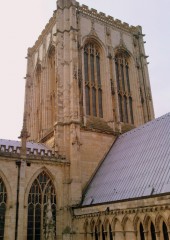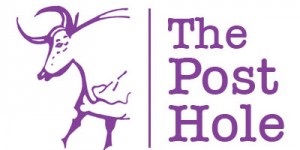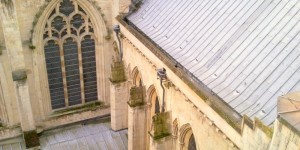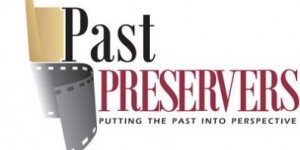This one and a half hour talk given by the curators of the Yorkshire Museum gave a perhaps unique opportunity to get 'up close and personal' with some of the museum's treasure Viking artefacts. The talk was fully booked, offering around twenty places to various people, including members of the public, students and re-enactors.
The session was structured around four artefacts from the Yorkshire Museum's collection; the Ormside bowl, a particularly unusual gold torque, a collections of strap ends and cumulating in Cawood sword. Participants were given the chance to handle some of the less fragile artefacts at the same time as receiving a presentation explaining their story and history and details about the manufacture and use. The curators were able to answer any questions that arose with confidence and detail, without leaving the audience too out of depth, ideal as some of the attendees although interested in archaeology were not grounded with a background.
The Ormside bowl, an 8th century bowl which had been converted to a drinking vessel late into its life and was buried with a Viking warrior. The bowl is an exceptional artefact made of two pieces riveted together. The outer is gilded silver with vinework decoration whilst the inside is plain with a blue glass bead surviving with evidence for three others now missing. This was one of the two artefacts not able to be handled, due to its fragile nature.
The second artefact was a gold Viking arm ring. This artefact is of such a high gold content, 96%, it is worth an estimated ?22,000 pounds. The artefact has no context which is unfortunate, having been found in a box under a York builder's bed by his children after his death. Much debate has occurred regarding the construction of the arm ring in conjunction with jewellers. The high gold content and intricate construction is said to point to the incredibly high status of the owner, possibly indicating gift relations. The torque is definitely worth a look, it's the closest to high end jewellery craftsmanship without the dirty looks from the cashiers!
The penultimate artefacts were a collection of 8 complete strap-ends which formed two complete sets of four. Called the Poppleton strap-ends, they were found in a field in Upper Poppleton, near York and are made from silver with Anglo-Scandinavian style decoration. They are referred to as Trewiddle style after a similar hoard found in Trewiddle, Cornwall and feature stylised animals.
The final artefact was billed to be the highlight of the talk, the Cawood sword. This unusual weapon features a pommel type dated as Viking around the 9th Century and a guard dated as Medieval around the 12th Century. Experts believe this sword could have belonged to someone on the cutting edge of style, a weapon fashionista if you will. The sword was found in the river Cawood in the 19th Century and appears to be in an amazing state of preservation, although x-rays still need to be conducted to establish the internal weaknesses. This could be due to the low oxygen levels in the river mud, or has been suggested by some, an exceptionally high carbon content making the sword a piece with particular high status and remarkable craftsmanship. Again, tests would need to be carried out to confirm this theory. The sword then passed into private ownership and was acquired by the museum after it was donated in lieu of tax after the owner passed away. The sword is inscribed on both sides, although the meaning is yet unknown with suggestions including a personalised inscription such a as a name, a Biblical inscription or a concept or spell similar to those invoked by runes but in a more modern alphabet. Again, more work in this area is hopefully to be carried out in the future.
All the artefacts, and more, can be found in the Yorkshire Museum, Museum Gardens in York. Entry is free to all York Card holders (available to anyone who lives in York, including students) and is otherwise £5 for adults and £3.50 for children. Concessions are £4 and the under 5's are free. Family and joint tickets are available and all tickets a valid for a year, subject to giving your details.
All the artefacts mentioned here are well worth a look. Although the opportunity to handle them has now passed, their splendour can still be appreciated in their glass cases. The other collections in the museum are also well worth a look and it all adds up to a great day out, especially in good weather with a picnic in the museum gardens. For those interested in studying Archaeology at degree level, the University of York Archaeology Department is situated right behind the museum and could be of benefit for a wander round, especially for its grade I listed building status. Further talks such as these are held periodically by the Yorkshire Museum. Details can be found by visiting their website.













